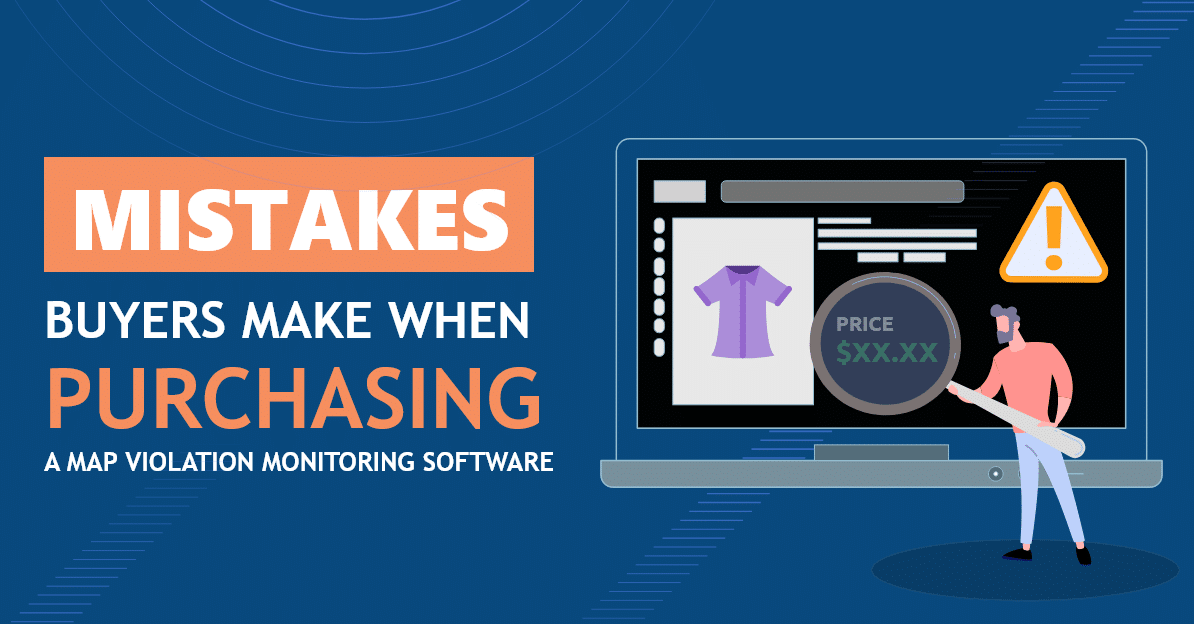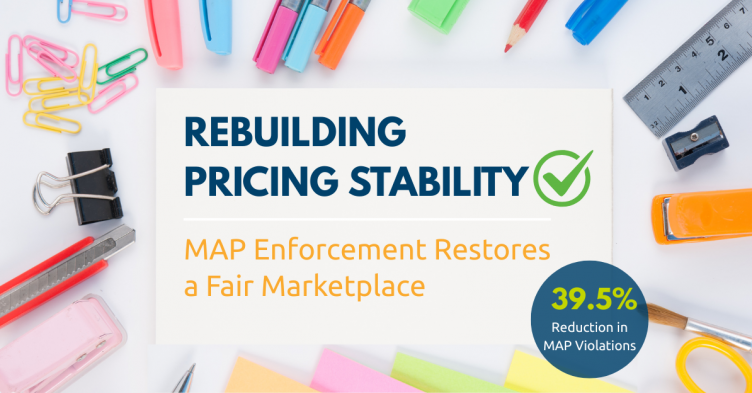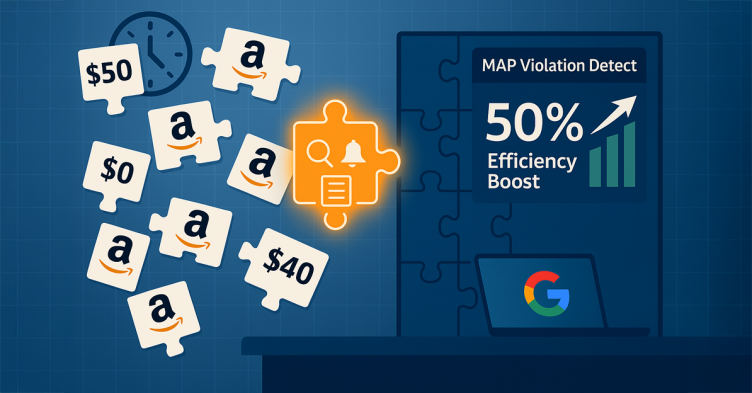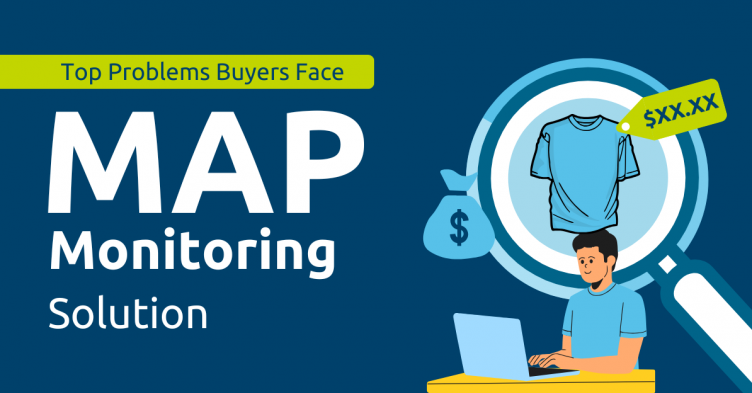Are you searching for a new MAP policy monitoring software or service to detect and address MAP violations? Or, are you not happy with your current minimum advertised policy service providers and seeking a replacement? We know finding and stopping map price policy violators across US, Canadian and Mexican channels is a daunting challenge. You come across free MAP monitoring tools to the enterprise solutions. We are here to share key questions you may want to answer as you select your minimum advertised price channel solution.
Here are good questions to ask as you select a MAP monitoring provider
- What is hindering the effectiveness of my current MAP monitoring solution to stop violations?
- How did I mistakenly purchase a faulty MAP price monitoring software?
- Despite investing a minimum advertised price monitoring tool, why do I continue to see map policy violations?
While the market offers a wide array of MAP monitoring tools and services, their effectiveness varies significantly. Do a Google search and you will find many providers that offer MAP price monitoring. You get tools from the free ones to low monthly priced tools to the enterprise service providers that offer tools and services. If you are a brand with a sharp yet resource strapped team, you don’t need another tool with tons and tons of reports to go through, do you? You want to work with a solution provider that spoon-feeds you answers you are seeking to ultimately help you stop your map policy violation issues, don’t you? If all you cared for was cheap data and tools, you will get many free to cheap MAP price tools. However, these come with huge downsides that we will forewarn you! You will waste hours of valuable time that you wish you hadn’t wasted – learning the tool, going through data after data to figure out how to stop the bad resellers. If you don’t have these hours to waste learning a new tool, please stay cautious!
With that said, the key question remains: What sets truly impactful MAP monitoring solutions apart?
We understand the challenges channel managers face in maintaining MAP compliance by wholesalers, distributions and retailers. From our experience working with mid to large brands with ecommerce presence only, and omnichannel retailers, we’ve crafted this guide to share knowledge you need to develop your winning MAP policy enforcement strategy. Whether you’re a new buyer navigating the landscape or an experienced buyer looking to replace your existing tool, this information is for you.
What are the 9 Mistakes To Avoid When Buying a MAP Policy Monitoring Software?
- The purchased software lacks accurate SKU-level comparison capabilities, particularly at a GTIN/UPC or ASIN level, resulting in the monitoring solution failing to deliver the promised accurate and reliable pricing data.
- As a channel manager, you expected the monitoring solution to track your SKUs at various times throughout the day. However, the software fell short of meeting your needs by not monitoring different geographies, e-commerce platforms, or countries. It cannot track products multiple times daily.
- As a manufacturer or brand, it’s important to regularly update your minimum advertised price prices, and offer MAP holidays on occasions like Cyber Monday, Black Friday, and Christmas. You will stop MAP prices for discontinued products while setting MAP pricing for your new products. Your MAP solution doesn’t easily and quickly accommodate these adjustments.
- On numerous occasions, MAP policies have not been upheld outside of the USA, Canada and Mexico, as resellers in European, South American, or Asian markets are selling products below the enforced price in US, Canadian and Mexican markets. Your solution provider isn’t guiding you on what to do here.
- Some resellers consistently violate minimum advertised prices, while others faithfully adhere to your pricing guidelines. It’s important to ensure that these resellers don’t feel irritated or threatened by receiving brief emails for minor mistakes or occasional MAP violations. The MAP monitoring software should be equipped to prevent such scenarios. Your monitoring solution lacks this capability.
- As a buyer, you might find it challenging to understand why violating resellers don’t adhere to your policies, despite your rules’ effectiveness. This is due to the platform’s inadequate monitoring capabilities or the provider’s lack of effective messaging features required to easily support your map violation outreach emails.
- You seek answers regarding seller violations, including the violator’s identity, reasons, timing, affected products, and other details. However, the current software support team lacks the capability to address such queries. Moreover, contacting them during business hours or via a bot poses challenges as they don’t respond for days. You wish you had spent some money to partner with a company providing 24/7 support.
- Platforms like Amazon, Walmart, and Google, along with others often operate as mysterious entities. Despite utilizing MAP tracking software to monitor violations on these platforms, reporting and taking action against resellers selling your products proves challenging. The overwhelming amount of data presents a barrier, as it doesn’t easily translate into actionable insights. This hinders your ability to address and mitigate these MAP violations effectively.
- The marketplace mandates sellers to offer particular discounts upon subscription sign-up, even if they comply with the Minimum Advertised Price (MAP) policy. This obligation often leads sellers to violate minimum price rules. However, most MAP monitoring software struggles to detect these occurrences and guide you.
Customized MAP Monitoring Solution: A Smart Approach to Enforce Your Minimum Advertised Pricing Policies
Years of experience have shown us that a custom-tailored MAP monitoring and enforcement solution is crucial but can be challenging to achieve. Instead of spreading yourself thin by monitoring individual websites, focusing on high-impact platforms like Google and Amazon will offer you the highest ROI.
Learn more about updates on GrowByData MAP enforcement solution.
Why Google Shopping?
Google Shopping serves as an ideal monitoring hub as it is an excellent aggregation site. By proactively identifying violations, tailoring outreach efforts, and progressively achieving results, you can drive success without the excessive costs associated with monitoring individual websites. Start with top-performing SKUs, scale up gradually, and concentrate on Google and Amazon US before expanding to Canada or Mexico. This step-wise approach will yield good outcomes.
Closely collaborate with your MAP compliance vendor to customize your approach. MAP Monitoring and Compliance demands a blend of science and art. There’s no one size fits all solution to police your channel. Success hinges on personalizing the program per your needs and continuing to customize based on what is working for you and other channel managers.



